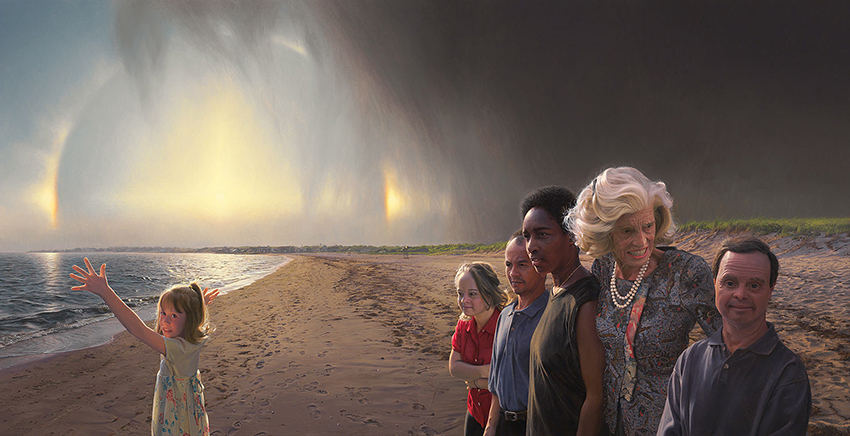Eunice Kennedy Shriver (1921–2009)

Eunice Kennedy Shriver 1921–2009 | Born Brookline, Massachusetts | David Lenz (born 1962) | Oil and acrylic on canvas, 2009 | Commissioned as part of the first prize, Outwin Boochever Portrait Competition 2006 | NPG.2009.11
Eunice Kennedy Shriver was the creative force behind and organizer of Special Olympics, Inc., a nonprofit charitable organization that provides training and competition in Olympic sports for children and adults with intellectual disabilities. The Special Olympics grew from a summer day camp she originally hosted at her home. In 1968 the Kennedy Foundation, working with the Chicago Park District, organized the First International Special Olympics Summer Games. Currently more than 5.5 million athletes with intellectual disabilities from more than 193 countries participate in the Special Olympics programs.
David Lenz was commissioned to paint this portrait as part of the first prize in NPG's inaugural Outwin Boochever Portrait Competition. Lenz, whose son Sam has Down syndrome and participates in Special Olympics, described Shriver as “gracious, kind, and very helpful.” In this portrait, Lenz strove to communicate a metaphor for Shriver’s efforts to lead persons with intellectual disabilities out of the darkness of misunderstanding and into the light of the hope for the future. Pictured beside Shriver are five individuals with intellectual disabilities who have been involved in Special Olympics and in the Best Buddies program: (left to right) Airika Straka, Katie Meade, Andy Leonard, Loretta Claiborne, and Marty Sheets. Straka’s upraised arms beneath the circular optical display in the sky mimics the Special Olympics logo.
- Look at the facial expressions and pose of the figures. How are the figures interacting with each other and the viewer of the portrait?
- Consider the artistic style of this portrait. What affect does the hyperrealism of the portrait have as you look closely?
- What is the mood of this portrait? What do you see that makes you say that?
- When the Portrait Gallery commissioned this work, Shriver was clear that individuals from Special Olympics and Best Buddies would be portrayed with her in this work. Why do you think that was important to her?